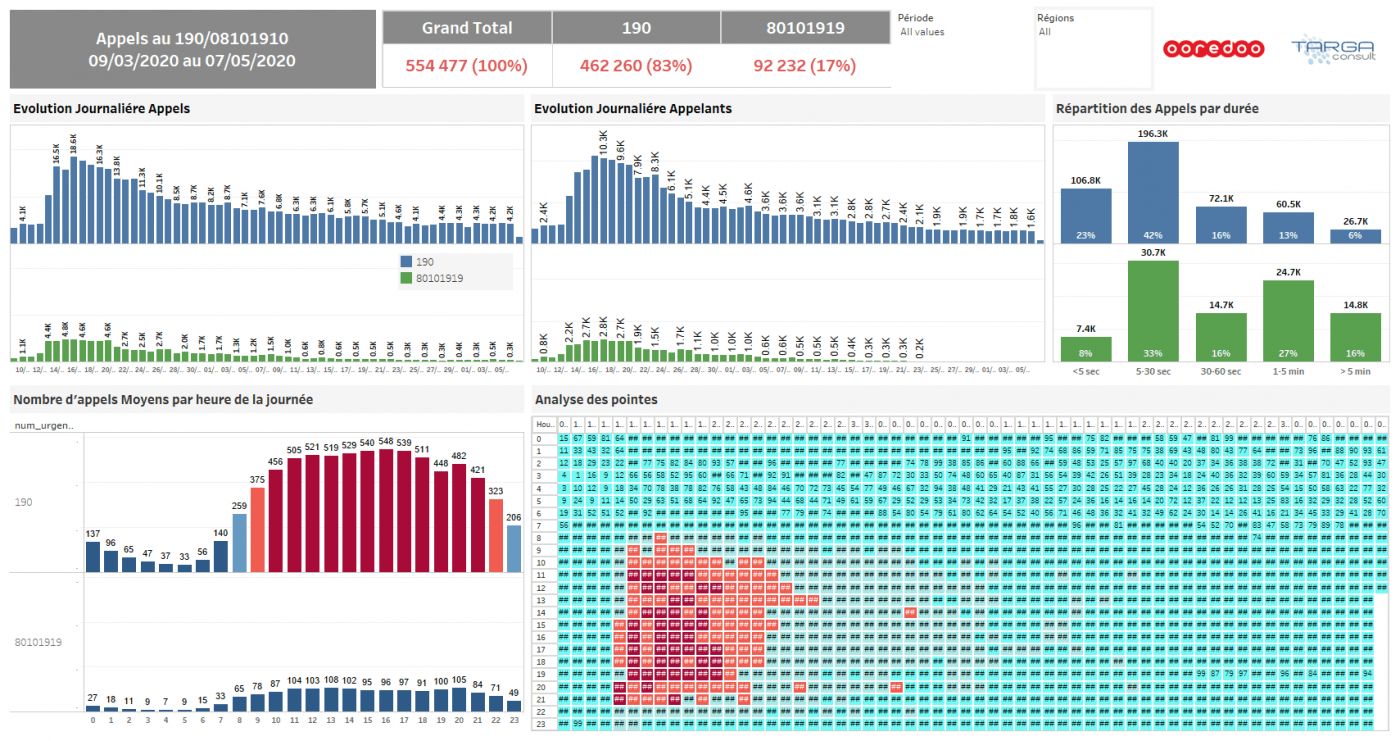

Tunisian government analyzes emergency call data to understand COVID-19 spread and provide more effective emergency response
Established in 2004, the Ministry of Communication Technologies and Digital Economy (MTCEN) is an agency of the Tunisian government focused on improving Tunisia's communications sector and acquiring new technology to serve the country's 11 million people.
With the onset of the COVID-19 pandemic, the Tunisian emergency services saw a sudden, dramatic spike in incoming phone calls. They received more than 450,000 calls in the first month of the pandemic—the equivalent of two years' worth in pre-pandemic times. Unable to reach an operator, citizens were calling up to 10 times each. While some calls were placed to a dedicated COVID-19 hotline, many were placed to 1-9-0, the country's general emergency number.
The volume of calls put a strain on emergency services, restricting their ability to provide fast, effective care to those who needed it most. The number of virus-related calls to 1-9-0, rather than to the hotline, limited MTCEN's efforts to track the spread of the virus. Greater understanding of their call data was key to organizing a consistent, effective response to the virus.
MTCEN worked alongside Tableau partner Targa Consult and Ooredoo, Tunisia’s largest telecommunications provider, to create dashboards that provide critical insights into call volumes, times, and geographical variation. Operational in just 24 hours, the dashboards allowed emergency doctors to explore and interact with the call data, and make necessary operational changes.
MTCEN discovered that 57% of calls to the emergency number were under 30 seconds, indicating callers were hanging up before reaching an operator. By visualizing average call length and average number of calls per person, operators can now call people back who were unable to reach the emergency number, ensuring citizens receive the critical response they need.
The data justified MTCEN developing a public communications campaign that promoted the COVID-19 hotline, while a redirect solution was built to divert non-emergency calls. These improvements provided greater clarity into the call data, and by understanding call density and geographical variation, local emergency services can now monitor trends and identify contamination clusters across the country. Additionally, analyzing peak call times allows the government to manage emergency team response and other resources more effectively, helping them stay ahead of the virus.
It's exceptional work. The dashboards give us much needed insight and allow us to optimize our efforts. Thanks to these tools we’ve made a major leap forward in our emergency response.